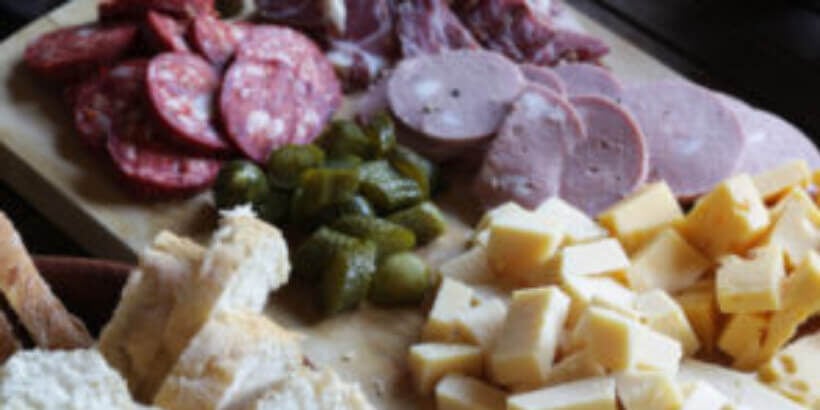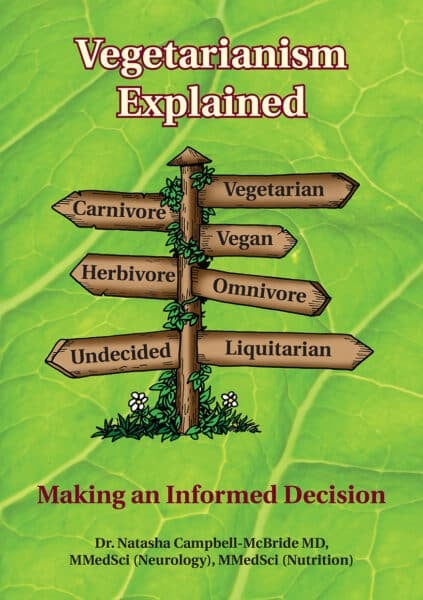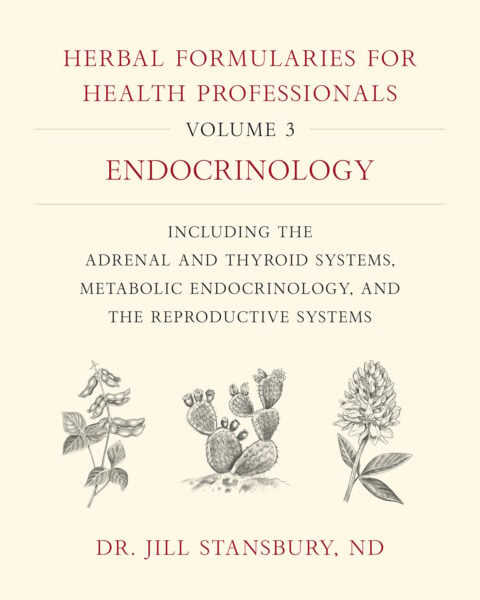Fermented Foods: Health Benefits & Cultural Rehabilitation

When we talk about “culture,” we’re talking about everything humans have ever created to make their lives a little nicer, from painting, to music and literature, and including food traditions. We also use the word “culture” to describe foods that are alive with beneficial bacteria.
It’s no coincidence. Humans have been working together with health-giving microbes to improve our foods for longer than we’ve been painting or writing. Fermentation is culture, and there’s nobody who knows that better than our resident fermented foods expert, Sandor Ellix Katz!
Below is an excerpt from his book Wild Fermentation, and if it whets your appetite for more information you should check out his newest book, The Art of Fermentation, too.
The following is an excerpt from Wild Fermentation: The Flavor, Nutrition, and Craft of Live-Culture Foods by Sandor Katz. It has been adapted for the Web.
Fermented foods and drinks are quite literally alive with flavor and nutrition.
Their flavors tend to be strong and pronounced. Think of stinky aged cheeses, tangy sauerkraut, rich earthy miso, smooth sublime wines. Humans have always appreciated the distinctive flavors resulting from the transformative power of microscopic bacteria and fungi.
One major benefit of fermentation is that it preserves food. Fermentation organisms produce alcohol, lactic acid, and acetic acid, all “bio-preservatives” that retain nutrients and prevent spoilage.
Vegetables, fruits, milk, fish, and meat are highly perishable, and our ancestors used whatever techniques they could discover to store foods from seasons of plenty for later consumption.
Captain James Cook, the eighteenth-century English explorer who extended the far reaches of the British Empire, was recognized by the Royal Society for having conquered scurvy (vitamin C deficiency) among his crews by sailing with large quantities of sauerkraut.1
On his second round-the-world voyage, in the 1770s, sixty barrels of kraut lasted for twenty-seven months, and not a single crew member developed scurvy, which previously had killed huge numbers of the crews of long sea voyages.2
Among the many lands Cook “discovered” and delivered into the Crown’s realm were the Hawaiian Islands (Cook called them the Sandwich Islands in honor of his patron).
I find it an interesting parallel that the Polynesian people who crossed the Pacific Ocean and populated Hawaii more than a thousand years before Captain Cook also sustained themselves through the long voyage with fermented food, in this case poi, a thick starchy taro root porridge still popular in Hawaii and throughout the South Pacific.3
Fermentation not only preserves nutrients, it breaks them down into more easily digestible forms.
Soybeans are a good example. This extraordinarily protein-rich food is largely indigestible without fermentation.
Fermentation breaks down the soybeans’ complex protein into readily digestible amino acids, giving us traditional Asian foods such as miso, tempeh, and tamari (soy sauce), which have become staples in contemporary Western vegetarian cuisine.
Milk, too, is difficult for many people to digest.
Lactobacilli (a type of bacteria present in fermented dairy products and many other types of ferments) transform lactose, the milk sugar that so many humans cannot tolerate, into easier-to-digest lactic acid. Likewise, wheat that has undergone fermentation is easier to digest than unfermented wheat.
A study in the journal Nutritional Health compared unfermented and fermented versions of a mix of barley, lentils, milk powder, and tomato pulp and found that “starch digestibility almost doubled in the fermented mixture.”4
According to the United Nations Food and Agriculture Organization, which actively promotes fermentation as a critical source of nutrients worldwide, fermentation improves the bioavailability of minerals present in food.5
Bill Mollison, author of the Permaculture Book of Ferment and Human Nutrition, calls the action of fermenting foods “a form of pre-digestion.”6
Fermentation also creates new nutrients.
As they go through their life cycles, microbial cultures create B vitamins, including folic acid, riboflavin, niacin, thiamin, and biotin.
(Ferments have often been credited with creating vitamin B12, otherwise absent from plantsource foods; however, this bubble has now been burst by improved assaying techniques that show that what had been identified as B12 in fermented soy and vegetables are actually inactive “analogues.”
B12 is only found in foods from animal sources, suggesting that a vegan diet is deficient in B12 without supplementation, the efficacy of which is quite controversial.7)
Some ferments have been shown to function as antioxidants, scavenging cancer precursors known as “free radicals” from the cells of your body.8 Lactobacilli create omega-3 fatty acids, essential for cell membrane and immune system function.9
A marketer of “cultured whole food supplements” boasts that “the culturing process generates copious amounts of naturally occurring ingredients like superoxide dismustase, GTF chromium, detoxifying compounds like glutathione, phospholipids, digestive enzymes, and beta 1,3 glucans.”10
Frankly, nutritional factoids like this make my eyes glaze over.
You don’t really need chemical analysis to tell you what foods are healthy. Trust your instincts and your taste buds. The data adds up to this: Fermentation makes food more nutritious.
Fermentation also removes toxins from foods. This is vividly illustrated by the case of cassava, an enormous tuber native to the tropical regions of the Americas that has also become a staple food in equatorial regions of Africa and Asia.
Certain varieties of cassava contain high levels of cyanide and are poisonous until they have undergone a soaking fermentation. The fermentation process eliminates the cyanide, rendering the cassava edible and nutritious.
Not all food toxins are as dramatic as cyanide.
All grains contain a compound called phytic acid, which can block absorption of zinc, calcium, iron, magnesium, and other minerals and lead to mineral deficiencies.
Fermenting grains by soaking them before cooking neutralizes phytic acid, rendering the grain far more nutritious.11 Nitrites, prussic acid, oxalic acid, nitrosamines, and glucosides are some other potentially toxic chemicals found in foods that can be reduced or eliminated by fermentation.12
Eating fermented foods live is an incredibly healthy practice, directly supplying your digestive tract with living cultures essential to breaking down food and assimilating nutrients. Not all fermented foods are still alive when you eat them.
Certain foods, by their nature, cannot contain live cultures. Breads, for instance, must be baked, thereby killing the organisms present in them. However, many fermented foods can be consumed live, especially those involving Lactobacilli, and alive is the most nutritious way to eat them.
- Sue Shephard, Pickled, Potted, and Canned: How the Art and Science of Food Preserving Changed the World (New York: Simon & Schuster, 2000), 210.
- Claude Aubert, Les Aliments Fermentés Traditionnels (Mens, France: Association Terre Vivante, 1985), cited in Sally Fallon, Nourishing Traditions (Washington, D.C.: New Trends Publishing, 1999), 95.
- Shephard, Pickled, Potted, and Canned, 129.
- R. Binita and N. Khetarpaul, “Probiotic Fermentation: Effect on Antinutrients and Digestibility of Starch and Protein of Indigenously Developed Food Mixture,” Nutritional Health 11, no. 3 (1997).
- Chavan et al., United Nations Food and Agriculture Organization, Fermented Foods: A Global Perspective, Agriculture Services Bulletin, 1999.
- Bill Mollison, The Permaculture Book of Ferment and Human Nutrition (Tyalgum, Australia: Tagari Publications, 1993), 20.
- Victor Herbert, “Vitamin B-12: Plant Sources, Requirements, and Assay,” American Journal of Clinical Nutrition 48 (1988), 852–58.
- L. A. Santiago, M. Hiramatsu, and A. Mori, “Japanese Soybean Paste Miso Scavenges Free Radicals and Inhibits Lipid Peroxidation,” Journal of Nutrition Science and Vitaminology 38, no. 3 (June 1992).
- S. Bengmark, “Immunonutrition: Role of Biosurfactants, Fiber, and Probiotic Bacteria,” Nutrition 14, nos. 7–8 (1998).
- “New Chapter Health Report,” 2000.
- Sally Fallon goes on at some length about phytic acid in Nourishing Traditions, 452. This idea is confirmed in Paul Pitchford’s Healing with Whole Foods (Berkeley: North Atlantic Books, 1993), 184.
- Mollison, The Permaculture Book of Ferment and Human Nutrition, 20.
Recommended Reads
Recent Articles
Oh, honeysuckle…how we love thee. If only there was a way to capture the sweet essence of this plant so we could enjoy it more than just in passing. Luckily, foraging and some preparation can help make that happen! Here’s a springtime recipe that tastes exactly like honeysuckle smells. The following excerpt is from Forage,…
Read MoreIntroducing…your new favorite brunch dish! This whole broccoli frittata is packed with fresh, wildcrafted flavors that are bound to help you start your day off on the right foot. The following is an excerpt from The Forager Chef’s Book of Flora by Alan Bergo. It has been adapted for the web. RECIPE: Whole Broccoli Frittata…
Read MoreMany know the effects of catnip on our feline friends, but few realize that catnip has medicinal effects for humans. From stomach aches to reducing fevers, catnip is a versatile herb with many benefits. The next time you grow this plant for your cat you may end up taking a few cuttings for yourself! The…
Read MoreWondering where to forage for greens this spring? Look no further than hedges, which serve as natural havens for wild greens and herbs! The following is an excerpt from Hedgelands by Christopher Hart. It has been adapted for the web. Food from Hedges: Salads and Greens Let’s start by looking at all the wild foods…
Read MoreThere’s a whole new world out there when it comes to koji. It doesn’t matter if you’re making bread, cheese, or ice cream, koji helps you pump up the flavor! Growing Koji in Your Own Kitchen Koji, the microbe behind the delicious, umami flavors of soy sauce, miso, fermented bean sauce, and so many of…
Read More








